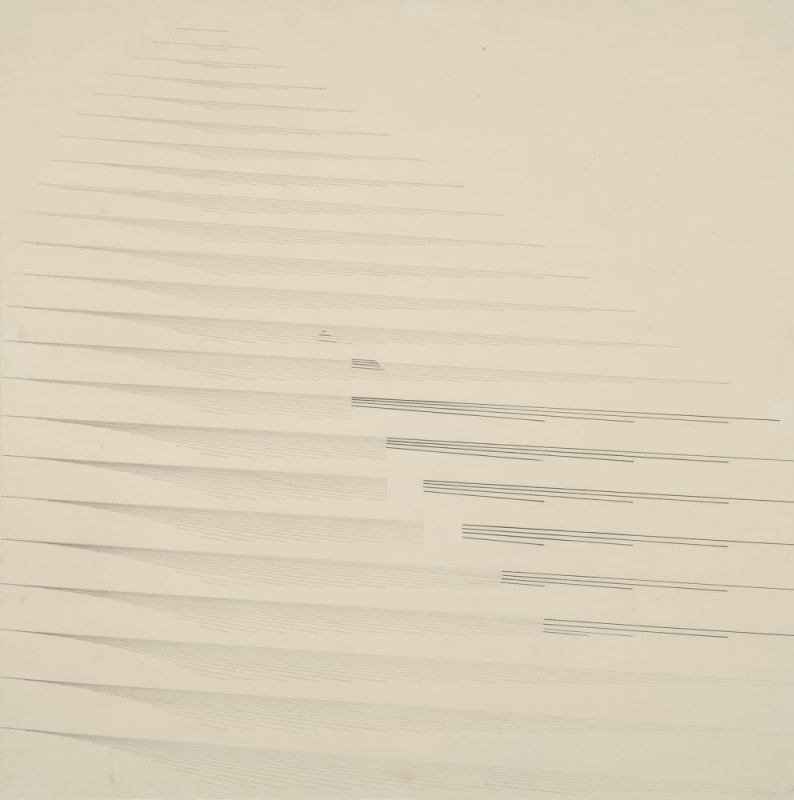
The drawings and photographs of Nasreen Mohamedi (1937-1990) are slowly but surely becoming better known to a wider American audience. In 2003, Holland Cotter, who has been her most eloquent champion in New York, wrote in the New York Times, “if people, especially young artists, knew about Mohamedi, they would love her the way they do Eva Hesse.” Cotter is right. Mohamedi, whose work was first seen in a group show, Out of India: Contemporary Art of the South Asian Diaspora at the Queens Museum in 1997, had a small solo show of drawings and photographs, Nasreen Mohamedi: Lines among Lines at Drawing Center in 2005, at the same time that 3 X Abstraction: New Methods of Drawing by Emma Kunz, Hilma Af Klint, and Agnes Martin was on view. Mohamedi’s drawings would have more than held their own in the 3 X Abstraction show, but sometimes even the dead have to take what they get. This exhibition at Talwar Gallery is her third solo show in New York, and the first only of her drawings.
Some prejudices die hard, and the ones that Mohamedi’s work evinces are deeply ingrained. In her geometric drawings and photographs she doesn’t show the slightest inclination to make art that can be racially or culturally identified. Eschewing these often stultifying safety nets is just one reason why young artists, especially those who feel a similar pressure, should know about Mohamedi’s work. The other, more important reason is that her work clears a fresh space within a crowded territory occupied by Agnes Martin and Kasimir Malevich, the stillness of the former and the dynamics of the latter, without giving an inch; and that’s breathtaking. In a very real sense, her drawings quietly but firmly say to Western abstract artists, “Move aside. I am your equal.”
Mohamedi was born in Karachi (which was once part of India and is now part of Pakistan) and died of Parkinson’s disease in the relatively isolated coastal town of Kihim, about one hundred miles from Mumbai. She studied at St. Martin’s School in London (1954 to 1957) and privately in Paris (1961-1963). She returned to India, and from 1972 until 1988, she taught at the Maharaja Sayajirao University of Baroda. During this time she became friends with the reclusive V. S. Gaitonde (1924 – 2001), the pioneer of non-objective painting in India. When the history of abstraction in India becomes known outside of that country, Mohamedi’s secure place in her nation’s pantheon will become apparent.
-John Yau